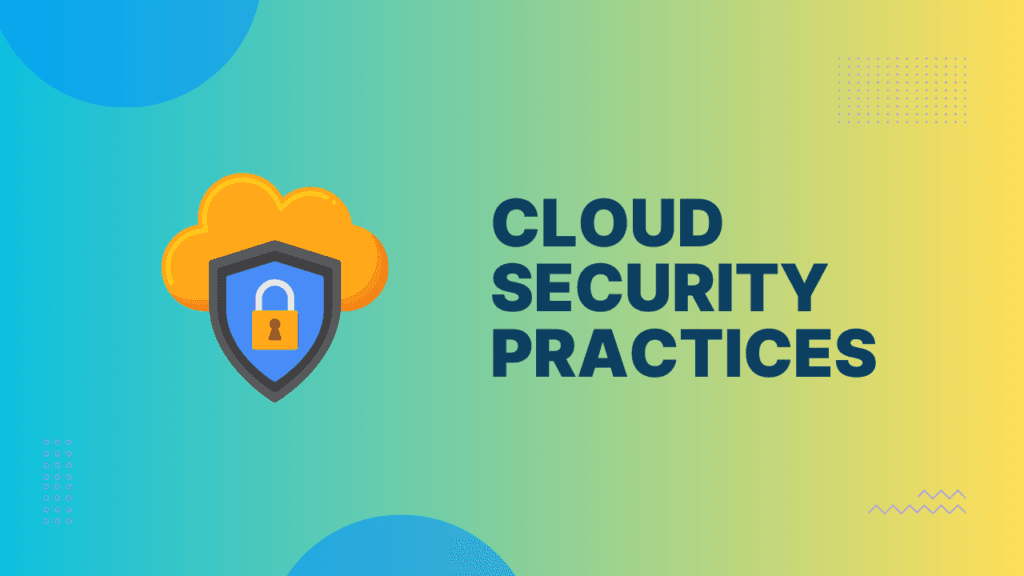Small and Medium Businesses (SMBs) are reaching new heights of success by applying cloud technology to their workflow. With cloud technology, they are achieving increased productivity and efficiency across various departments within the organization.
By deploying this technology, businesses can access affordable business intelligence services, giving them a competitive edge in the market. In this way, small to medium organizations can target more workloads in the cloud and boost IT capabilities. But, there’s also a higher risk involved. What’s that?
With increased usage of cloud applications and storage, there are greater risks of compromised data security and privacy. Gartner predicts that by this year, 95% of total digital workloads will be deployed on cloud platforms. Thus, there is an increasing data security concern among small and medium businesses.
Today, even a small organization handles a vast amount of data in the form of customer information, financial records, sensitive business data, etc. Handling all this data requires comprehensive security measures and a collective effort from everyone in the organization.
Cyber Threat Trends in 2025
As per CISCO’s Cyber Threat Trends Report, the most devastating online threat categories are Information Stealers, Trojans, and Ransomware. You can check the hundreds of millions of average monthly blocks they have caused single-handedly.
| Cyber Threat Type | Avg. Monthly Blocks |
| Information Stealer | 246 Million |
| Trojan | 175 Million |
| Ransomware | 154 Million |
| RAT (Remote Access Trojans) | 46 Million |
| APT (Advanced Persistent Threats) | 40 Million |
| Botnet | 31 Million |
| Dropper | 20 Million |
| Backdoor | 14 Million |
Best Practices For SMB Cloud Security
With cyber attacks being constantly modified and technology-based, you need to follow the given best practices to ensure data safety in SMBs.

1. Shared Responsibility For Data Security
Data security protocols need to be implemented and followed in both directions: from the provider’s and the user’s side. Shared data security during storing, accessing, and sharing data on cloud storage is advised for end-to-end protection from any security breaches.
The cloud service provider is responsible for the security of the fundamental infrastructure (networks, storage systems, and servers) and implementation of security methods (access controls, encryption, and firewalls). This ensures that the cloud infrastructure is secured from any unauthorized breaches and cyberattacks.
Users are responsible for data protection and access management. You can follow these measures by checking access, using strong passwords, encrypting sensitive data, and backing up data daily.
2. Strictly Follow Data Governance Policies
You need to follow the established data governance policies for relevant access and data protection. These governance policies must have clear guidelines for segregating data based on importance and sensitivity. In sectors like finance and healthcare, there is confidential data, like financial information and medical records. These types of data are highly sensitive and must be secured using data encryption and strict access controls.
3. Set Up Powerful Access Controls
To maintain data confidentiality and security, you must follow the ‘least privilege’ principle, which states that only people who need access to complete their job need to have access, and nobody else.
There are two primary methods of access control:
- Role-Based Access Control (RBAC), in which permissions are given based on users’ predefined roles and responsibilities.
- Attribute-Based Access Control (ABAC), in which attributes, like user role, location, type of device, and time of access, are considered to make access decisions depending on contextual factors and predefined policies.
Additionally, you need to keep updating and checking access controls regularly to maintain accuracy and alignment with the latest business needs.
4. Robust Authentication Methods
For a long time, passwords have been single-handedly keeping sensitive data secure. But with the advancement in methods of cyberattacks and security breaches, organizations need to power up their security measures. Multi-Factor Authentication (MFA) can be a powerful way to secure data, as it uses multi-step verifications, like passwords and mobile app codes. Or you can also use technologies like facial or fingerprint recognition, eliminating the need for passwords. These methods use biometric data and mobile apps to verify identities. The latest facial recognition technology has a negligible error rate, making it an ideal method for data security.
5. Data Encryption
Data encryption is the easiest and safest way to protect data confidentiality and integrity. It converts data into an unreadable format to prevent unauthorized access without the required decryption keys. For ultimate security, you must encrypt data when it is at rest, stored, or being transferred.
The security of the encryption keys is also important. If any unauthorized personnel get access to the encryption keys, they could easily decrypt the data. To prevent this situation, key management policies must be followed. It controls access to the keys, stores them in protected locations, and alters the keys daily. To prevent any data loss, you must back up the encryption keys regularly, too.
6. Maintain Security Hygiene
You must follow the given methods to increase data security in your organization:
- Make your team learn the best practices on cybersecurity.
- Encourage responsible data management by administering security awareness training to the responsible team/s.
- Always keep your software and applications updated by applying patches to detect known threats.
These measures will help your team to quickly identify and take action against any cyber threats or attacks.
Also, keep your security measures up to date with your business needs. Review your hardware and software systems, access controls, and data backups regularly to avoid online threats and identify them quickly to take appropriate action.
7. Disaster Risk & Recovery Plan
In case of any security failure, always be prepared with a comprehensive plan for data recovery and continuity. Analyze potential security risks and put together a strategic plan to avoid or reduce the effects of a data breach.
In case of a disaster, you need to have a contingency plan for data recovery and continuity. This plan must include the following:
- Outlined steps to respond to a security incident.
- Source of threat identification.
- Isolation of the affected systems.
- Restoring backed-up data promptly.
With the advancement of cyberattack methods, you need to manage and access your data with complete security. Needless to say, you must have a comprehensive disaster risk and data recovery plan to respond to attacks and prevent one, as quickly and effectively as possible.
Why Cloud Security Practices Are Vital in SMBs?
As cloud adoption and security methods are advancing, so are the cyber threats. With the introduction of AI, cyber criminals are using innovative methods to break through security barriers and get access to large-scale data easily. To combat this, small and medium-scale organizations and businesses must utilize the above-mentioned proactive methods. It is essential to build a robust cloud security strategy that includes employee training and awareness, security assessments, implementation of MFA, regular system updates, etc.
If you are searching for cloud providers, look for aspects like personalized solutions, adequate experience in the SMB, data protection strategies, unhindered coordination, and other such important factors before selecting the right one for your organization.
Related: Top Cybersecurity Certifications for 2025
Related: How To Become a Data Scientist







